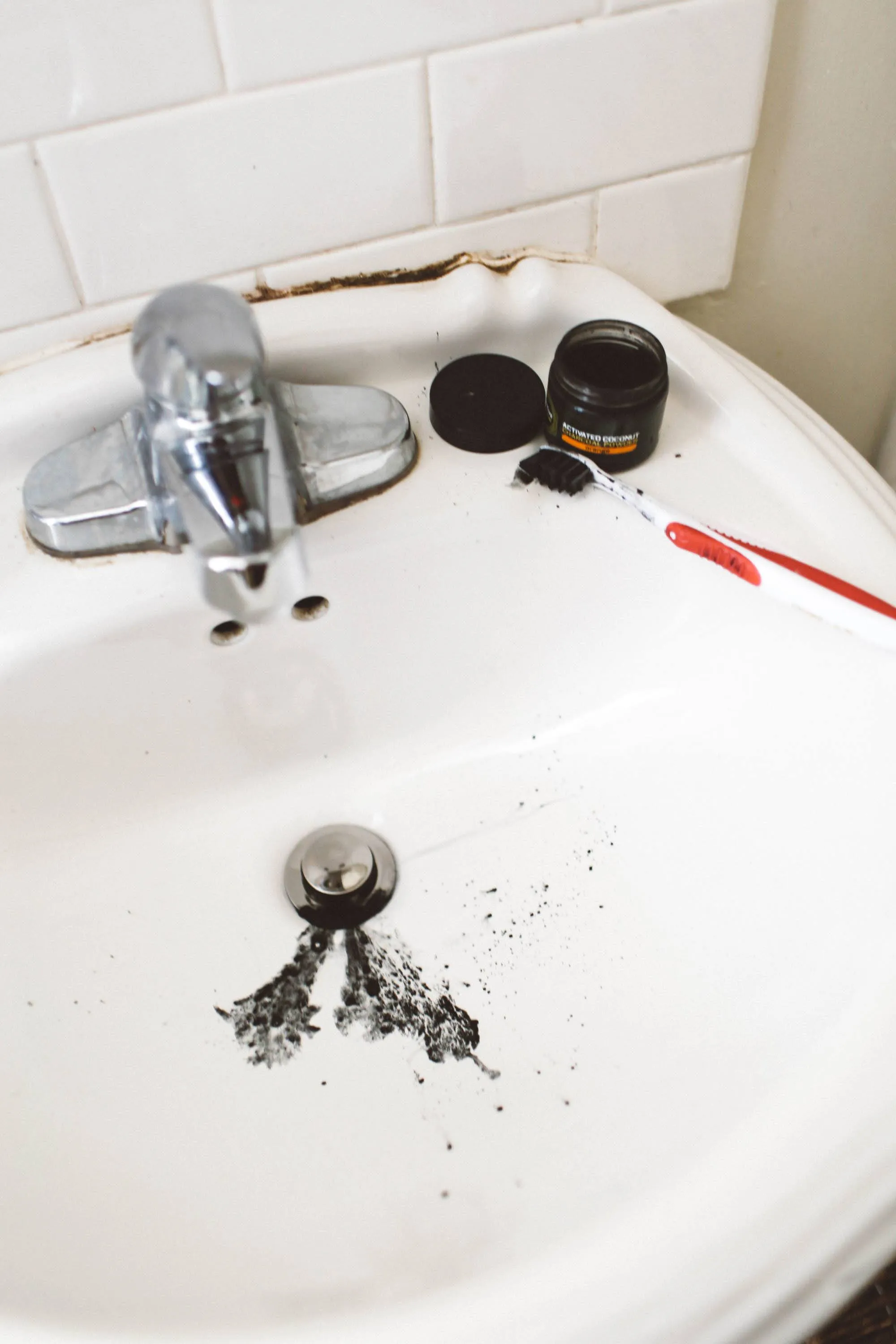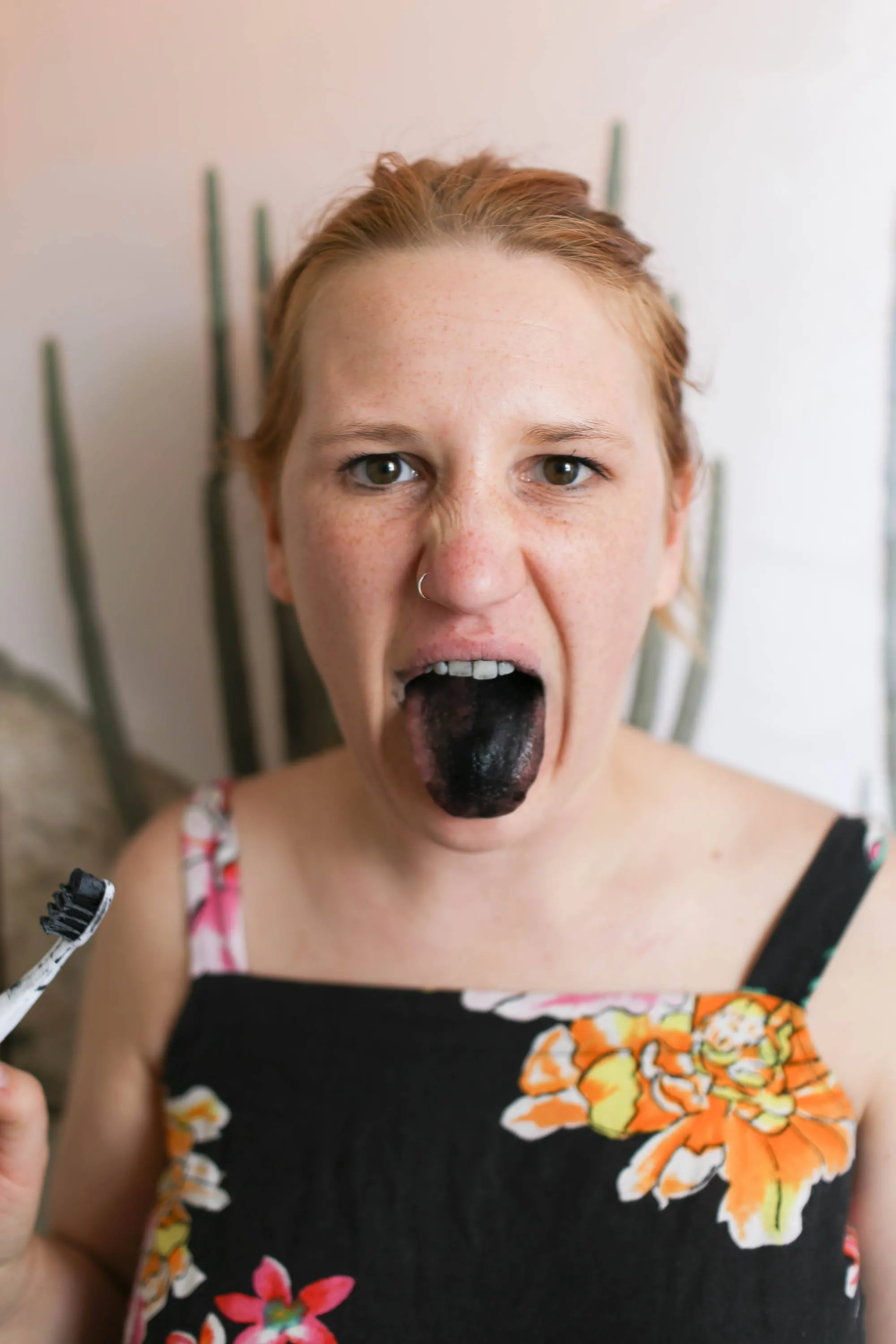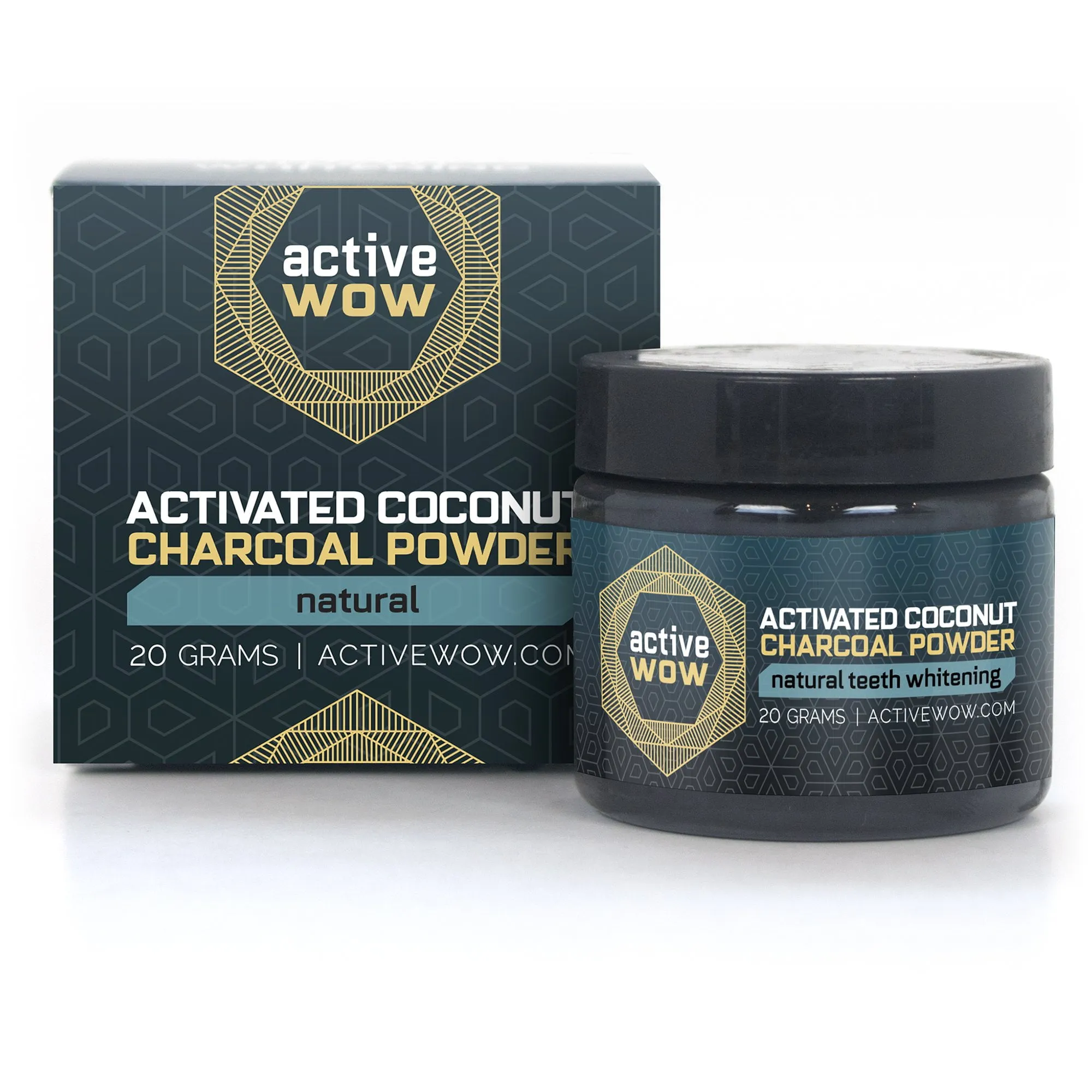What Is Active Charcoal Teeth Whitening?
Active charcoal teeth whitening has become a popular trend in the dental hygiene world, attracting attention for its purported ability to whiten teeth using a natural ingredient. But what exactly is active charcoal, and how does it claim to work? Essentially, active charcoal is a form of carbon that has been processed to increase its porosity, meaning it has a greater capacity to absorb substances. This characteristic is what makes it potentially useful in teeth whitening. It’s typically derived from sources like coconut shells, wood, or other organic materials. This porous nature allows it to trap stains and other impurities, offering a different approach than chemical-based whitening treatments. Many people are turning to active charcoal as a perceived alternative to harsh chemicals, seeking a more natural route to a brighter smile. The core idea behind its use is that it can help remove surface stains from the teeth, leading to a visibly whiter appearance.
How Active Charcoal Works for Teeth Whitening
The mechanism behind active charcoal’s teeth-whitening capabilities is rooted in its absorbent properties. Because of its porous structure, active charcoal can bind to and remove surface stains on teeth. These stains are often caused by substances such as coffee, tea, wine, and tobacco. When used correctly, active charcoal can help lift these stains, leading to a brighter smile. However, it is important to note that active charcoal is primarily effective on surface stains and does not change the natural color of your teeth. It’s a physical process, not a chemical one like peroxide-based whiteners. Therefore, it is crucial to understand how active charcoal operates to have realistic expectations about the results you can achieve.
Absorbing Stains with Charcoal

The primary way active charcoal works is by absorbing stains. The porous nature of the charcoal allows it to attract and trap stain molecules. When you brush with active charcoal, these stain particles are lifted from the surface of your teeth. This action is similar to how charcoal filters are used in other applications, like water purification. By binding to the staining agents, active charcoal can help diminish the appearance of discoloration caused by food and beverages, offering a temporary whitening effect. However, it is crucial to be consistent with your use and understand that the effects can vary depending on the type and severity of the stains, as well as the individual’s oral hygiene habits. The primary focus of active charcoal is the physical removal of surface stains.
Polishing Teeth with Charcoal
Besides absorbing stains, active charcoal also acts as a gentle abrasive that polishes the teeth’s surface. This polishing action can remove plaque and improve the overall appearance of your teeth. The gritty texture of charcoal helps to gently scrub away surface impurities, contributing to a smoother and brighter smile. However, the abrasive nature also raises concerns regarding potential damage to tooth enamel if used excessively or incorrectly. The key is to use active charcoal products with caution, ensuring they do not contain overly abrasive particles. Proper brushing technique, combined with a gentle approach, can maximize the benefits of polishing without causing harm. It is important to consider that while polishing can enhance the look of your teeth, it is not a substitute for proper oral hygiene, which involves regular brushing, flossing, and dental check-ups.
Active Charcoal Teeth Whitening Reviews Top Fact 1 Effectiveness
One of the most important aspects to consider when evaluating active charcoal for teeth whitening is its effectiveness. Many reviews claim varying degrees of success, and it’s essential to understand what you can realistically expect. Active charcoal can effectively remove surface stains from your teeth, especially those caused by coffee, tea, and smoking. Many users have reported seeing a noticeable improvement in the brightness of their teeth after consistent use. However, it’s crucial to remember that active charcoal doesn’t change the underlying color of your teeth. The whitening is primarily due to stain removal, which can lead to a brighter appearance, but not necessarily a dramatic change in shade.
How Effective Is Active Charcoal for Whitening Teeth?

The effectiveness of active charcoal for teeth whitening can vary significantly. In cases of mild surface stains, it often provides a noticeable improvement, leading to a brighter smile. However, for deeper stains or significant discoloration, active charcoal may not be as effective as professional treatments or products containing bleaching agents, such as hydrogen peroxide. Studies and user reviews suggest that the results are typically modest. Some users see a difference within a few weeks of regular use, while others may not notice significant changes. The level of effectiveness also depends on the frequency of use, the application method, and the individual’s oral hygiene habits. It’s important to set realistic expectations and understand that active charcoal is most effective for surface stain removal and not for changing the intrinsic color of your teeth.
Factors Influencing Effectiveness
Several factors can influence the effectiveness of active charcoal for teeth whitening. The type and severity of stains play a significant role. Surface stains, such as those from coffee or tea, are generally easier to remove than deeper, intrinsic stains. The quality of the active charcoal product also matters, as some products may contain better ingredients or have a more effective formulation. Proper application is also essential. Following the product instructions carefully and using the correct brushing technique can maximize results. Individual oral hygiene habits, such as brushing twice a day and flossing regularly, can significantly impact the overall effectiveness. The more consistent and thorough your oral care routine, the better the results you are likely to achieve with active charcoal.
Active Charcoal Teeth Whitening Reviews Top Fact 2 Safety Concerns
Safety is a paramount concern when using any teeth-whitening product. While active charcoal is often marketed as a natural and safe alternative, several potential risks and concerns need to be considered. The abrasive nature of charcoal can be a double-edged sword. While it helps to remove stains, it can also potentially erode tooth enamel if used excessively or with too much force. Enamel erosion can lead to increased sensitivity and a higher risk of cavities. Additionally, some active charcoal products may contain additives or ingredients that could cause irritation or allergic reactions in certain individuals. It’s essential to be aware of these potential risks and to use active charcoal with caution, paying close attention to how your teeth and gums react. Consulting a dentist before using any new whitening product is always advisable to ensure it is suitable for your specific oral health needs.
Is Active Charcoal Safe for Your Teeth?

Whether active charcoal is safe for your teeth is a subject of debate. While some studies have indicated it can be safe when used correctly, concerns remain regarding its abrasive properties. The key to safety is moderation and proper technique. Using a soft-bristled toothbrush and applying gentle pressure are crucial to minimizing the risk of enamel erosion. Opting for high-quality active charcoal products that are specifically formulated for dental use can reduce the risk of abrasiveness. However, even with these precautions, long-term use could potentially lead to enamel wear. For individuals with sensitive teeth or existing dental issues, consulting a dentist before using active charcoal is highly recommended. They can assess your oral health and advise whether active charcoal is a safe option for you.
Potential Risks of Using Active Charcoal
Several potential risks are associated with using active charcoal for teeth whitening. Enamel erosion is a primary concern, as the abrasive nature of charcoal can wear down the protective outer layer of your teeth. This can lead to increased sensitivity to hot and cold foods and drinks, as well as an increased risk of cavities. Gum irritation or damage is another potential risk, especially if the charcoal product contains harsh ingredients or is applied aggressively. Some users may experience allergic reactions or sensitivities to certain charcoal products. Additionally, active charcoal may not be effective for everyone, and overuse could lead to disappointment and potential harm. It is essential to be informed about these risks and to use active charcoal with caution, seeking professional advice if you have any concerns about your oral health.
Active Charcoal Teeth Whitening Reviews Top Fact 3 Application Methods
The way you apply active charcoal can significantly impact its effectiveness and safety. Various application methods are available, ranging from using charcoal powder directly to using pre-mixed charcoal toothpaste. Understanding the proper techniques can help you maximize the benefits while minimizing potential risks. The common methods usually involve brushing your teeth with charcoal, often combined with water or a small amount of toothpaste, for a few minutes. Rinse thoroughly after use. Consider the product’s consistency, abrasive level, and your individual oral health needs. Some methods may be more suitable for certain types of teeth or oral hygiene habits. Always follow the product’s instructions and consult with your dentist about the best application method for your specific needs.
Different Ways to Use Active Charcoal

There are several ways to incorporate active charcoal into your teeth-whitening routine. One common method involves using active charcoal powder. You can dip a wet toothbrush into the powder and brush your teeth, typically for 2–3 minutes, then rinse. Pre-mixed charcoal toothpaste is another convenient option. These toothpastes contain active charcoal along with other ingredients. Charcoal-infused strips are a newer option. These strips are coated with active charcoal and applied directly to the teeth. Some users mix charcoal powder with water or coconut oil to create a paste. The best method depends on your personal preference, your oral health, and the product you are using. Always follow the product’s instructions and be mindful of your teeth’s sensitivity to the product.
Best Practices for Applying Charcoal
To ensure the safe and effective use of active charcoal, adhere to some best practices. Always use a soft-bristled toothbrush to minimize abrasion on your enamel. Apply gentle pressure when brushing to avoid causing damage. If using charcoal powder, ensure you rinse thoroughly after brushing to remove any charcoal residue completely. If you experience increased sensitivity or irritation, discontinue use and consult your dentist. Limit the frequency of use, as excessive brushing with charcoal can increase the risk of enamel erosion. It is also beneficial to alternate between charcoal products and regular toothpaste. Lastly, before incorporating any new teeth-whitening method, it is essential to consult a dentist to ensure that the chosen method is appropriate for your specific oral health.
Active Charcoal Teeth Whitening Reviews Top Fact 4 Comparison with Other Methods
When considering active charcoal for teeth whitening, it’s useful to compare it with other methods, such as professional whitening treatments and over-the-counter products. Understanding the differences, advantages, and disadvantages can help you make an informed decision that best suits your needs. Active charcoal offers a natural approach to teeth whitening, but it is essential to recognize its limitations and potential risks compared to other more established methods. Each method has its own pros and cons, cost considerations, and effectiveness levels. Before choosing a teeth-whitening approach, weigh the options and consult with your dentist to determine which one is most appropriate and beneficial for your oral health goals.
Active Charcoal vs Professional Whitening

Professional teeth-whitening treatments, typically done by a dentist, are generally more effective than active charcoal in achieving significant whitening results. These treatments often use highly concentrated hydrogen peroxide or other bleaching agents to penetrate the enamel and alter the intrinsic color of the teeth. Professional whitening is faster and more effective, providing noticeable results within a single session. However, professional whitening is usually more expensive than using active charcoal, and it can cause temporary sensitivity in some individuals. Active charcoal, on the other hand, is a less aggressive and more natural approach, but it is primarily effective for removing surface stains. Comparing the results, professional whitening often gives better outcomes, but charcoal offers a more accessible and affordable option for those seeking a natural whitening method.
Active Charcoal vs Over the Counter Products
Over-the-counter (OTC) teeth-whitening products, such as whitening strips, gels, and toothpastes, offer a middle-ground between active charcoal and professional treatments. Many OTC products contain a lower concentration of hydrogen peroxide or other bleaching agents than professional treatments, making them less potent but also potentially less irritating. Active charcoal is different because it focuses on stain removal rather than altering the tooth color. OTC products often provide more consistent and predictable results compared to active charcoal, which may vary depending on the type of stains, application method, and individual oral hygiene habits. The cost of OTC products is usually higher than active charcoal but lower than professional treatments. When comparing active charcoal to OTC products, consider the whitening goals and the potential for long-term effectiveness and safety of each product.
Active Charcoal Teeth Whitening Reviews Top Fact 5 User Reviews and Experiences
User reviews and experiences provide valuable insights into the real-world effectiveness and potential downsides of active charcoal for teeth whitening. Reading reviews from others who have used active charcoal can help you form realistic expectations and understand the typical outcomes. Reviewers often share their experiences with different brands and application methods. Positive reviews frequently highlight the effectiveness of stain removal, with users reporting a noticeable improvement in the brightness of their teeth. However, negative reviews frequently express dissatisfaction, such as limited whitening results and concerns about tooth sensitivity. By reading a variety of reviews, potential users can better weigh the pros and cons of active charcoal, and identify potential pitfalls. Always keep in mind that individual results may vary based on oral hygiene habits, the type of stains, and the quality of the product.
Real User Experiences

Real user experiences with active charcoal are varied. Some users report significant whitening improvements, particularly in removing stains from coffee, tea, and smoking. They often praise active charcoal for its affordability and natural approach. Users emphasize the importance of consistent use and proper brushing techniques. In contrast, other users report limited or no whitening results, noting that active charcoal is not effective for deeper discoloration. They highlight potential side effects such as tooth sensitivity and gum irritation. Many users also discuss the texture and taste of active charcoal products, suggesting that it can be messy and unpleasant. The experiences underscore the need for realistic expectations and caution when using active charcoal, with a strong emphasis on proper technique and consistent oral hygiene.
Common Pros and Cons
Understanding the common pros and cons can help you make a well-informed decision about using active charcoal. The pros include being a natural and relatively affordable teeth-whitening method. Active charcoal can effectively remove surface stains, providing a temporary brightening effect. However, there are also significant downsides. The effectiveness varies, and active charcoal may not provide dramatic whitening results compared to professional treatments. There are also safety concerns, including the potential for enamel erosion and gum irritation. The messiness and the sometimes unpleasant taste and texture of the products are also frequently mentioned. Before deciding to use active charcoal, consider all these factors, evaluate your oral health, and, if needed, consult your dentist for personalized advice.
Conclusion Active Charcoal Teeth Whitening Reviews
In conclusion, active charcoal offers a natural approach to teeth whitening, primarily by removing surface stains. User reviews and scientific evidence suggest varying degrees of effectiveness. It can provide a brighter smile for some users, particularly those with mild surface stains. However, it may not deliver dramatic whitening results compared to professional treatments. Safety considerations, such as enamel erosion and gum irritation, require attention, and it’s crucial to use active charcoal products with caution and proper technique. Before incorporating active charcoal into your oral hygiene routine, consult your dentist. They can assess your specific needs and recommend the safest and most effective methods for achieving your desired smile. Setting realistic expectations and considering potential risks will help you make a well-informed choice about active charcoal and its place in your oral care regimen.
